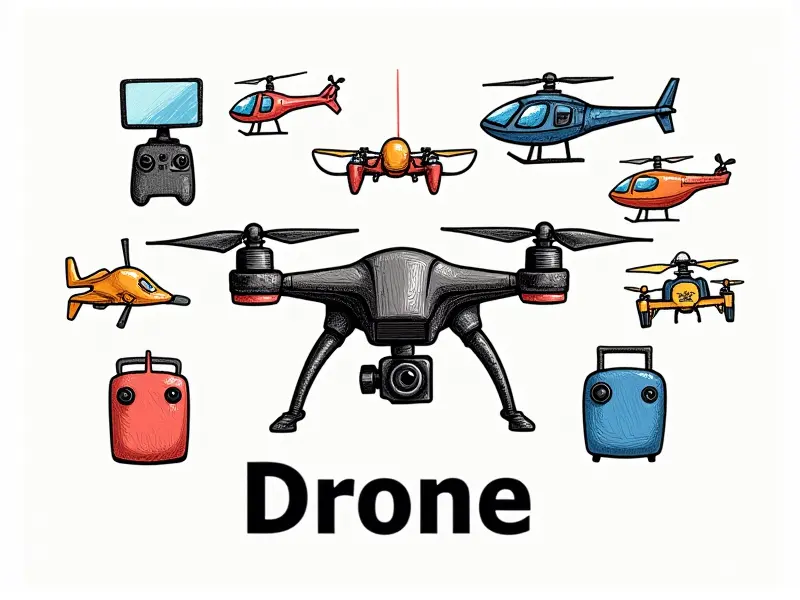What does FPV mean in drones?

First-Person View (FPV) technology has revolutionized the world of drones, providing enthusiasts with an immersive and exhilarating flying experience. This article delves into the significance of FPV for drone pilots, exploring its benefits, applications, and future prospects.
Why FPV is Essential for Drone Enthusiasts
The advent of FPV technology has transformed the way drone enthusiasts interact with their devices. By providing a first-person perspective through a live video feed, FPV allows pilots to see what their drones are seeing in real-time. This capability significantly enhances control and maneuverability, making it an indispensable feature for serious drone users.
How FPV Enhances Your Drone Experience
FPV technology offers several advantages that elevate the overall flying experience:
- Enhanced Control: Pilots can make precise adjustments to their drones based on real-time visual feedback, leading to smoother and more responsive flight patterns.
- Increased Engagement: The immersive nature of FPV viewing keeps pilots engaged and excited throughout the flying session.
- Better Visibility: With high-resolution cameras and advanced video transmission systems, FPV drones provide clear visibility even in challenging environments or at long distances.
Exploring the World of FPV Drones
The world of FPV drones is vast and diverse. From small racing drones to large camera-equipped models, there are numerous options available for different purposes:
- Racing Drones: Designed for speed and agility, these drones feature lightweight frames and powerful motors.
- CineWing Drones: Equipped with high-quality cameras and gimbals, these drones are ideal for aerial photography and videography.
Benefits of Using FPV in Drones
The benefits of incorporating FPV technology into your drone setup are numerous:
- Improved Navigation: Real-time video feedback helps pilots navigate through complex environments with ease.
- Enhanced Safety: By providing a clear view of the surroundings, FPV reduces the risk of collisions and other accidents.
- Increased Fun Factor: The thrill of flying from the drone's perspective makes for an incredibly enjoyable experience.
The Basics of FPV Drone Racing
FPV drone racing has gained immense popularity in recent years. Here are some key aspects to understand:
- Racing Rules: Each race follows specific rules and regulations, ensuring fair competition.
- Drone Setup: Racing drones typically feature specialized components such as lightweight frames, high-speed motors, and powerful batteries.
Getting Started with FPV Drone Setup
If you're new to FPV drone flying, here are some steps to get started:
- Select the Right Components: Choose a reliable camera, video transmitter, and receiver.
- Install Necessary Software: Download and install flight control software for optimal performance.
FPV: First-Person View in Drone Tech
The concept of FPV is simple yet revolutionary. By transmitting a live video feed from the drone to a pilot's display, FPV allows pilots to experience the world as seen through their drones' eyes. This technology has opened up new possibilities for aerial exploration and entertainment.
Understanding FPV Technology in Drones
FPV technology involves several key components:
- Camera: High-resolution cameras capture the drone's perspective.
- Video Transmitter (VTX): Sends video signals from the camera to a receiver.
- Receiver: Receives and processes video signals, displaying them on a monitor or goggles.
FPV: Revolutionizing Drone Piloting
The impact of FPV technology on drone piloting cannot be overstated. It has transformed what was once a hobby into a competitive sport and an exciting form of entertainment:
- Competitive Racing: FPV racing events attract thousands of participants worldwide.
- Aerial Photography: FPV drones equipped with high-quality cameras offer stunning aerial shots.
How FPV Enhances Drone Flying
The integration of FPV technology into drone flying offers several enhancements:
- Better Control: Real-time video feedback allows for precise control and maneuvering.
- Increased Immersion: The first-person perspective provides a more engaging and thrilling experience.
The Future of Drone Piloting with FPV
The future looks bright for FPV drone technology. Advancements in camera quality, video transmission range, and battery life will continue to push the boundaries of what is possible:
- Improved Camera Quality: Higher resolution cameras will provide even clearer visuals.
- Extended Range: Enhanced video transmission systems will allow for longer-range flying.
Conclusion
The advent of FPV technology has transformed the drone piloting experience, offering unparalleled control and immersion. As advancements continue to be made in this field, the future looks promising for both hobbyists and professionals alike. Whether you're into racing or aerial photography, FPV is here to stay and will undoubtedly play a crucial role in shaping the future of drone technology.

